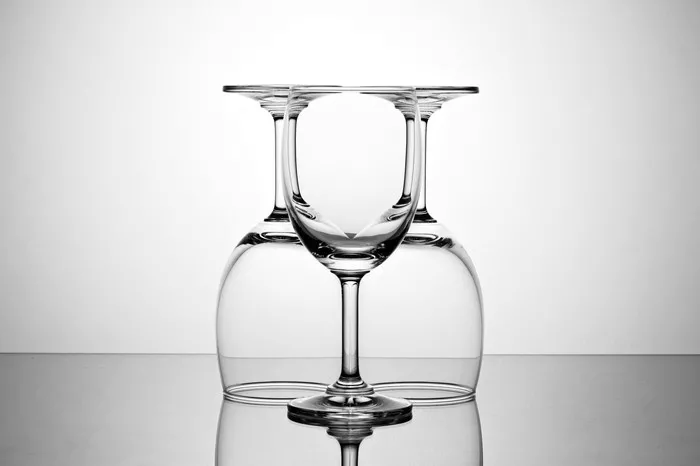The perennial debate swirling around chardonnay is whether it leans towards sweetness or dryness. As one of the most widely planted and versatile grape varieties globally, chardonnay has the remarkable ability to produce wines that span a spectrum from bone-dry to lusciously sweet. Understanding the factors influencing its taste profile, winemaking techniques, and the impact of terroir is crucial in deciphering where a particular chardonnay falls on the spectrum of sweetness to dryness.
Terroir’s Influence on Chardonnay: Setting the Stage
Terroir, often considered the “sense of place” in winemaking, profoundly shapes a chardonnay’s characteristics. This encompasses the soil, climate, altitude, and geographical location where the grapes are cultivated. Each factor influences the grape’s sugar and acid content, dictating the potential sweetness or dryness of the final wine. Winemakers craft chardonnay wines that reflect the unique terroir of the vineyard, resulting in diverse styles that cater to varying palates. Thus, the debate over whether chardonnay is sweet or dry can often be linked to the terroir where the grapes were grown.
Grapes’ Natural Sugar Levels: A Determining Factor
Understanding the inherent sugar levels in chardonnay grapes provides insight into the potential sweetness of the resulting wine. Chardonnay grapes possess varying sugar concentrations at harvest, influenced by factors such as ripeness, sun exposure, and climate. Riper grapes tend to have higher sugar levels, potentially leading to sweeter wines if fermentation is stopped before all sugars are converted to alcohol. Conversely, when fermentation continues until all sugars are converted, a drier wine with minimal residual sugar is produced. This pivotal winemaking decision significantly impacts whether a chardonnay leans towards sweetness or dryness.
Winemaking Techniques: Shaping Chardonnay’s Profile
The winemaking process plays a pivotal role in determining whether a chardonnay exhibits sweetness or dryness. Winemakers have an array of techniques at their disposal to influence a wine’s final sugar content. For instance, if the goal is a sweet or off-dry chardonnay, winemakers may halt fermentation prematurely, leaving residual sugar. On the other hand, for those aiming for a drier profile, fermentation is typically allowed to continue until all sugars are converted into alcohol by yeast.
Furthermore, oak aging is a prevalent technique used in chardonnay production, imparting diverse flavor profiles. Wines aged in oak barrels often exhibit vanilla, butter, and spice notes, potentially masking or complementing the inherent sweetness or dryness of the wine. The choice of oak and its toasting level can significantly influence the perception of sweetness in a chardonnay.
The Role of Acidity: Balancing Sweetness and Dryness
Acidity acts as a balancing factor in the sweetness-dryness equation of chardonnay. Grapes grown in cooler climates tend to retain higher acidity levels, providing a refreshing zing and counterbalancing any perceived sweetness. Winemakers keen on crafting drier chardonnays often opt for grapes from cooler regions to maintain the wine’s crispness and prevent it from appearing overly sweet, despite any residual sugar.
Conversely, warmer climate grapes might produce wines with lower acidity, potentially enhancing the perception of sweetness even in wines labeled as dry due to decreased acid presence. The interplay between sugar and acidity is a delicate dance that influences how a chardonnay is perceived on the palate.
Regional Variations: Exploring Diverse Styles
The sweet versus dry debate further intensifies when considering the various regional styles of chardonnay. Burgundy, the grape’s birthplace, is renowned for its nuanced, terroir-driven expressions often tending towards dryness. Burgundian chardonnays showcase minerality, balanced acidity, and restrained fruitiness, reflecting the cooler climate and limestone-rich soils of the region.
Conversely, New World regions like California, Australia, and New Zealand produce a wide spectrum of chardonnays. Californian chardonnays, notably from Napa Valley and Sonoma, often exhibit riper fruit flavors, fuller bodies, and noticeable oak influence, resulting in a perception of sweetness even in drier styles due to the richness of fruit and oak characteristics.
Australian chardonnays, particularly those from Margaret River or Yarra Valley, showcase a balance between ripe fruit and acidity, providing a spectrum of styles from vibrant and lean to more opulent and textured. Meanwhile, New Zealand’s cooler climates yield chardonnays with pronounced acidity, showcasing a crisper profile and often leaning towards drier expressions.
Consumer Perception and Preferences
The perception of sweetness in chardonnay is subjective and varies among consumers based on individual taste preferences. While some prefer the crispness of a bone-dry chardonnay, others might gravitate towards a more fruit-forward or slightly sweet profile. Wineries often cater to these preferences by labeling wines according to sweetness levels, helping consumers make informed choices based on their palate preferences.
Furthermore, cultural influences and trends play a role in shaping consumer preferences. In recent years, there has been a shift towards lighter, less oaked chardonnays, leading to a surge in popularity for crisper, fresher styles that often lean towards dryness. This evolving consumer demand has prompted winemakers to adapt their styles to meet market preferences, contributing to the diversity of chardonnays available.
Conclusion: Embracing Chardonnay’s Diversity
In the grand tapestry of wines, chardonnay stands out as a canvas for winemakers to showcase their artistry. The sweet or dry debate surrounding chardonnay reflects the diversity and versatility of this grape variety, influenced by terroir, winemaking techniques, and regional styles.
Ultimately, the perceived sweetness or dryness of a chardonnay is a complex interplay of multiple factors. It is the culmination of where the grapes are grown, how they are tended, and the decisions made by skilled winemakers throughout the production process. Embracing this diversity allows wine enthusiasts to explore a wide spectrum of chardonnays, appreciating the myriad expressions this noble grape offers, regardless of where it falls on the sweetness-dryness continuum.


